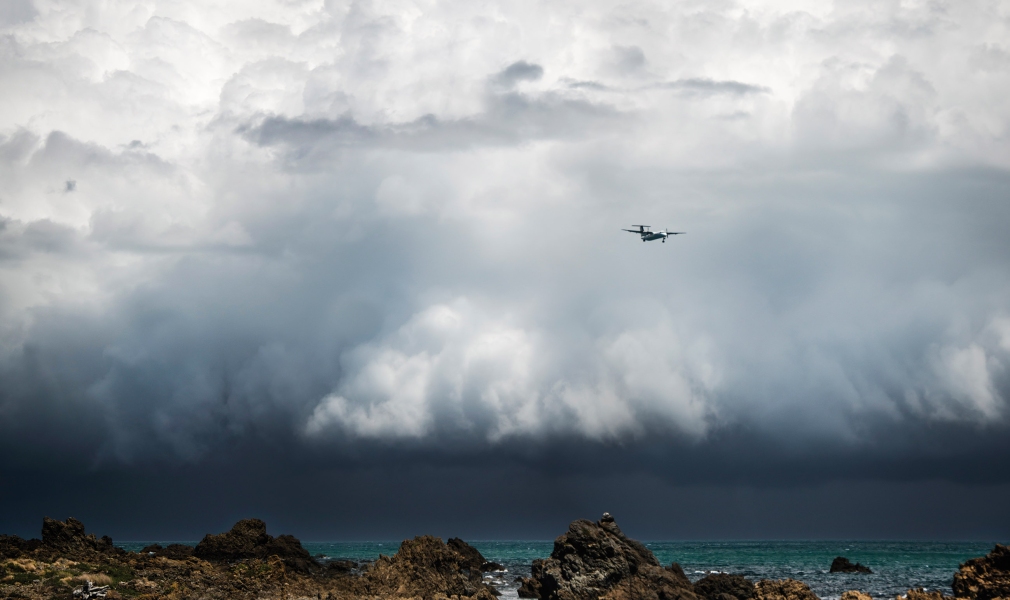NIWA's scientists say that a westerly in spring is the worst time to fly into Wellington.
Anyone who has ever flown into Wellington has a story to tell. Descents so bumpy it feels like you're falling down stairs, landings aborted at the last minute, passengers applauding the pilot after a particularly rocky flight, white knuckles, sweaty palms ... it's all part of flying into one of the world's windiest airports.
If you thought you just had to grip the armrest and bear it, NIWA scientists have some information to help you better understand what causes turbulence around Wellington and how to pick a good day to fly.
NIWA Meteorologist Dr Richard Turner says if he had to choose between landing in the capital in a 20 knot northerly or a 20 knot southerly, he'd pick the southerly every time.
That's because as a northerly wind comes over the hills, trees and buildings to the north of the city, it gets churned up and creates eddies and other irregular air movements in what is known as mechanical turbulence. The stronger the wind, the greater – and higher – the turbulence. The area over Titahi Bay and Newlands is a good source of turbulent air.
By contrast, the southerly travels over Cook Strait, which is flatter and smoother so the air doesn't get as churned up by the time it reaches the airport. "If a southerly change is just hitting, it can be very gusty, but generally the airflow is rougher at the airport with a northerly or northwesterly," says Dr Turner.
Fellow meteorologist Dr Mike Revell says that the scale of turbulence is proportional to the distance an aircraft is from the ground.
"The worst flying conditions occur when the turbulence scale is similar to the size of the aircraft, which often occurs on the approach path, but as you get closer to the ground, the turbulence scale reduces and has less effect on the aircraft."
Wellington is windy because it sits on the edge of Cook Strait – the major gap between two mountain ranges running the length of the North and South Islands. The wind can either go over or around the mountains, but going around is the easiest option. And as it funnels through the gap, it becomes faster and stronger, especially on the Wellington side.
This may not be particularly good news for nervous fliers, but Dr Turner says the good thing about Wellington Airport is that it rarely experiences dangerous crosswinds.
"Wellington is sheltered from the northeasterlies and south westerlies, so the wind goes pretty much up and down the runway," says Dr Revell.
"It's the westerly wind that is the most challenging, with turbulence spawned by the nearby hills."
Possibly the best chance of avoiding turbulence into Wellington is by not flying in during spring, which is consistently the windiest season of the year.
For more than two-thirds of October this year, wind gusts were stronger than 60km/h at Wellington Airport – the average is about half. The highest October wind gust in the country was 167km/h at Mt Kaukau, Wellington.
The high winds led to 430 flights being cancelled during October – the most recorded in a month. By comparison, the October average is 96. This year is also a record for the most flight cancellations at Wellington Airport, which now stands at more than 2280.
Dr Turner says, of the 10 strongest winds to hit the capital in the past decade, three have occurred in the past 15 months: northerlies in September and October last year and a southerly in June.
"That is a notable statistic – these are winds that are disruptive and doing damage."

